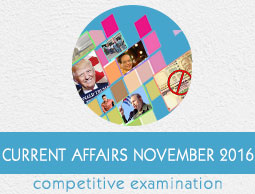
- Appointments
- Awards
- Books & Authors
- Committees
- Deaths
- Defence
- Economic
- Environment
- Finance
- Important Days
- International
- Miscellaneous
- National
- Persons in NEWS
- Places in NEWS
- Regional
- Reports
- Resignations & Retirements
- Science & Technology
- Sports
- November 2016 - Exams Resources
- Current Affairs - Quiz
- Current Affairs - Test
- Current Affairs - PDF
Current Affairs November 2016 - Technology
News 1 - NASA's most powerful space telescope completed

NASA successfully completed building its largest space telescope, which will be 100 times more powerful than the Hubble probe and may find the first galaxies that formed in the early universe.
The James Webb Space Telescope will be the successor to NASA's 26-year-old Hubble Space Telescope.
The Webb telescope's infrared cameras are so sensitive that it needs to be shielded from the rays of the Sun. A 5-layer sunshield of the size of a tennis court will prevent the background heat from the Sun from interfering with the telescope's infrared sensors.
News 2 - Researchers of IISER ease recovery of marine oil spills

Compound gelator developed by Indian Institute of Science Education and Research researchers, has made it easy to recover marine oil spills. Gelators are eco-friendly and could be applied over oil-water mixture in the form of powder thus extracting oil from oilwater mixture and could be reused.
Dr. Kana M. Sureshans team from the School of Chemistry used glucose as a starting material and through chain of chemical reactions produced compounds (gelators).
News 3 - India invited to join Russias MBIR nuclear reactor development project
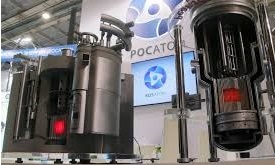
India has been invited by Russia to join so as to develop next-generation nuclear reactors and partner in its fast reactor research project, known as MBIR. A fast neutron reactor, is a type in which nuclear fission chain reaction is sustained by fast neutrons.
Fast research reactors development shows that by 2025, MBIR can be special kind facility in the world. The MBIRs design facility will help in conducting material testing research in those different environments.
News 4 - Mumbai based researchers identify biomarkers to diagnose TB
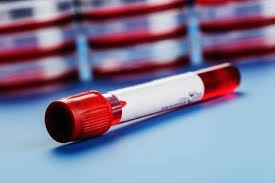
Mumbai-based researchers discovered two microRNA biomarkers present in serum samples that could be used for TB diagnosis.
The study covered measuring of the levels of 4 miRNAs in 30 newly diagnosed TB patients, 19 Multi Drug Resistant (MDR TB) patients and 10 patients who were cured of the disease. The use of these biomarkers may expedite the diagnosis of MDR-TB.
The researchers are still studying, to cover a larger population of drug-sensitive, MDR-TB and extra pulmonary TB patients.
News 5 - Indo-Japan MOU for Marine-Earth Science and Technology (JAMSTEC)

A Memorandum of Understanding with Japan Agency for Marine-Earth Science and Technology (JAMSTEC) and the Ministry of Earth Sciences, Government of India has been approved by the Cabinet.
The advancement of academic research in the field of Earth Sciences for the benefit of the peace and human welfare is the prime objective of the MOU.
The collaboration with JAMSTEC will not only enhance capability in the field of atmospheric and climate research, ocean technology observation and hazard mitigation but also provide much needed exposure and hands-on experience to Indian scientists.
News 6 - NASAs Magnetospheric Multiscale mission creates Guinness World Record

NASA scientists new discovery insight into Earths magnetosphere, has created Guinness world record for highest altitude fix of a GPS signal. Under Magnetospheric Multiscale mission, signal is fixed at 70000 kilometers above the surface of the Earth.
To complete such mission, scientists require four individual satellites that fly in a pyramid formation to map magnetic reconnection because GPS tracking allows the satellites to maintain a tight formation and obtain high resolution three-dimensional observations. The four MMS spacecraft required GPS measurements with accurate tracking systems and orbit calculations to guide tight flying formations.
News 7 - Water existence found on solar systems largest metallic asteroid Psyche
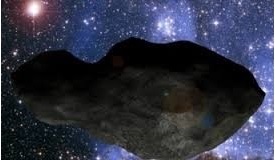
Solar systems largest metallic asteroid Psyche is found to have presence of water in a study published by Astronomical Journal. According to new observations by US Geological Survey and NASA, research was made using NASA Infrared Telescope Facility and found presence of water or hydroxyl on its surface which may be helpful in possible mechanisms of water molecules formation.
Psyche is made of pure nickel-iron metal, located in the asteroid belt and could be considered as a budding planet that was mostly destroyed by impacts billions of years ago.
News 8 - China launched XPNAV-1 pulsar navigation satellite
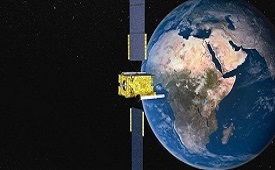
China launched XPNAV-1 navigation satellite from the Jiuquan Satellite Launch Center to conduct in-orbit experiments and experiment new technologies. However, the satellite is still undergoing tests to check detector functions and space environment adaptability.
A unique feature about XPNAV-1 navigation satellite is that it can determine the location of a spacecraft in deep space and lead to autonomous spacecraft navigation in the future, with the help of its periodic X-ray signals emitted from pulsars. Satellite is designed and developed by China Aerospace Science and Technology Corporation.
News 9 - US scientists develops long acting malaria drug
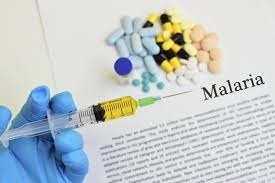
Scientists in US have developed a new long acting drug capsule that that may effectively treat malaria and many other diseases. The capsule remains in the stomach for up to two weeks after being swallowed, gradually releasing its payload, paving the way for a long acting pill.
This type of drug delivery could replace inconvenient regimens that require repeated doses, which would help to overcome one of the major obstacles to treating and potentially eliminating diseases such as malaria.
News 10 - China's Sunway TaihuLight topped TOP500 Supercomputer list
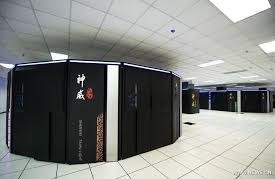
Semi-annual TOP500 Supercomputer list unveiled Chinas Sunway TaihuLight as worlds fastest supercomputer with Chinese Tianhe2 supercomputer at 2nd place and Supercomputer Titan of US Department of Energy at 3rd place. TOP500 list is based on machines performance on the Linpack benchmark.
Semi-annual TOP500 crown included Chinas super computer in its topmost list for the consecutive 8th time and it has been for the 1st time that a Chinese supercomputer has bagged top slot without any U.S. processors or technology.
News 11 - Ministry of Culture Sets up Science Cities
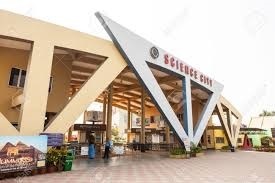
The Ministry of Culture sets up Science Cities namely Science City, Kolkata and Regional Science City, Lucknow. The Science Cities Scheme provides for setting up of Science Cities in all the states of the country subject to availability of funds for this purpose.
The states willing to avail of this Scheme have to provide land and share the cost of setting up of facility and corpus for upkeep and maintenance. The tentative time of completion of the project as per the Science Cities Scheme is 54 months from the date of start of the project.
News 12 - Scientists discovered exoplanet GJ 536 b around red dwarf star GJ 536

Spain Scientists Alejandro Suarez Mascareno from the Instituto de Astrofisica de Canarias (IAC) and the University of La Laguna (ULL) discovered a super-Earth like exoplanet GJ 536 b revolving around a red dwarf star GJ 536.
This exoplanet revolving the star GJ 536 is not within the star's habitable zone but its short orbital period of 8.7 days and the luminosity of its star. Exoplanet is rocky in nature whereas the star is much smaller and cooler than the sun.
News 13 - NASA successfully launched NOAA Advanced Geostationary Weather Satellite
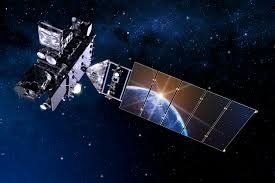
NASA successfully launched for the National Oceanic and Atmospheric Administration (NOAA) the first in a series of highly advanced geostationary weather satellites.
NOAAs Geostationary Operational Environmental Satellite-R (GOES-R) will boost the nations weather observation capabilities, leading to more accurate and timely forecasts, watches and warnings.
GOES-R also will be part of the Search and Rescue Satellite Aided Tracking (SARSAT) System, an international satellite-based search and rescue network operated by NOAA. The satellite is carrying a special transponder that can detect distress signals from emergency beacons.
News 14 - Tianlian I-04 satellite was successfully launched by China
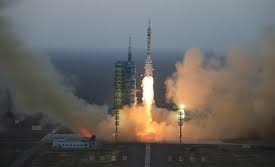
Tianlian I-04 satellite was successfully launched by China, which is the fourth in a constellation and was launched with an objective to achieve global network operation. It was designed by China Academy of Space Technology under the China Aerospace Science and Technology Corporation.
It has been estimated that network will provide measurement and control services for Chinas manned spacecraft, space labs and space technology. Prior to this, China launched its first data relay satellite, the Tianlian I-01, in April 2008.
News 15 - Prototype mySmartCane developed for blind

A PhD student, Vasileios Tsormpatzoudis, from The University of Manchester has developed a prototype tool, mySmartCane, that could help transform the lives of the blind and visually impaired.
He has added a low-cost embedded computer to the white cane that functions in a similar way to a car parking sensor. mySmartCane allows visual impaired people to sense their environment beyond the physical length of their cane. The ultrasonic ball wirelessly measures the distance to approaching objects and converts this data into an audio signal.
News 16 - Nasa developing breakfast food bars for deep space mission

NASA scientists have developed a variety of food bars that astronauts can eat for breakfast in the Orion spacecraft to explore deep space destinations. Orion has limited room inside it to accommodate the supplies and food astronauts will need during their missions.
These specially developed food bars will help reduce the amount of supplies Orion will carry for its crew. Orions first mission with crew will launch as early as 2021 atop the powerful Space Launch System rocket currently in development.